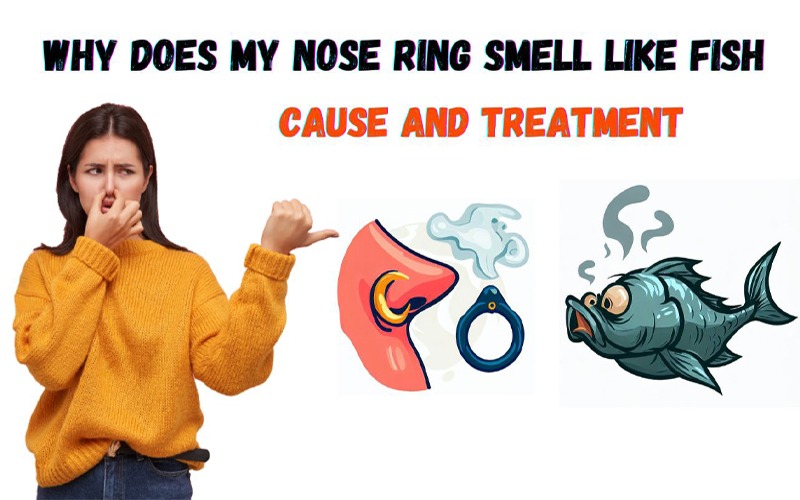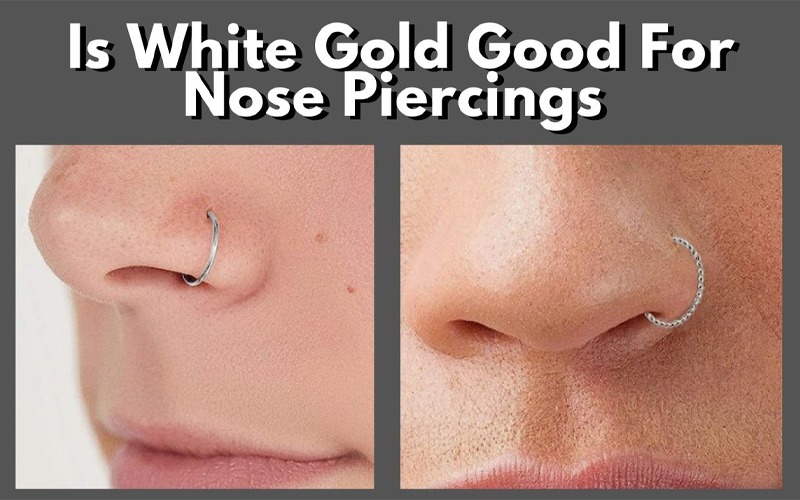In the realm of body modification, nipple piercings can be an expressive and aesthetically pleasing choice, yet they are not without potential complications, even long after the initial healing process. Occurrences of bleeding from an old nipple piercing can understandably raise concerns for the individual, prompting questions about the underlying cause and appropriate measures to take. A variety of factors may contribute to such a situation, including but not limited to mechanical irritation, the resurgence of an infection, or an allergic reaction to the jewelry material. As we examine the various etiologies and their respective signs, it becomes clear that understanding the delicate balance between the body’s healing response and external influences is crucial. This discussion aims to illuminate the intricacies of managing an old nipple piercing that has begun to bleed, and the importance of distinguishing between a benign incident and one that necessitates professional intervention — a distinction that could be paramount in maintaining not only the integrity of the piercing but also one’s overall health.
Identifying the Causes
Bleeding from a nipple piercing can be attributed to several factors, including the piercing process itself, inadequate aftercare, or physical trauma to the area. It is essential for individuals who value their autonomy and body expression to understand these potential causes so they may exercise their freedom responsibly while maintaining their well-being.
The piercing process, when not performed by a professional, can lead to excessive damage to the tissue, resulting in bleeding and an increased risk of infection. Adequate aftercare is paramount to the healing process; this involves keeping the piercing clean and dry, following guidelines diligently to reduce the risk of complications. Ignoring proper aftercare can lead to the development of scar tissue, which may become problematic if not addressed promptly.
Physical trauma, such as accidental snags or rough handling, can also cause a previously healed or healing piercing to bleed. It is crucial to protect the piercing from any undue stress to prevent reopening wounds. Any bleeding accompanied by signs of infection, such as unusual discharge, persistent redness, or swelling, should be taken seriously. An infected nipple piercing requires prompt medical advice to prevent further complications.
To safeguard one’s health and the integrity of the piercing, it is advisable to be vigilant for any adverse changes. Seek professional guidance when necessary, and adhere to recommended aftercare practices to ensure a smooth healing process and reduce the risk of infection. Ultimately, being well-informed and attentive to the needs of your piercing allows you to enjoy the freedom of body modification with peace of mind.
Signs of Infection
Recognizing the symptoms of an infection is critical for those with a nipple piercing. Discharge, often accompanied by an unpleasant odor, is a clear indicator that the piercing site may be infected. Additionally, persistent inflammation and redness can signal the need for medical evaluation and potential treatment.
Identifying Infection Symptoms
When a nipple piercing exhibits signs such as pus discharge, persistent redness, or swelling, it may indicate the presence of an infection. It’s crucial to understand that nipple piercings carry a risk of infection, and recognizing infection symptoms early can avert more severe health issues. In addition to the clear indicators, be alert for itching, pronounced pain, and a foul smell emanating from the piercing site, as these are also telltale signs of infection. If you experience body aches, fever, or fatigue alongside these local symptoms, it’s imperative to seek the guidance of a healthcare provider. They might prescribe antibiotics or recommend a saline solution soak to manage the infection. Addressing signs of infection promptly can help maintain your freedom from further complications.
Discharge and Odor Concerns
Building on the importance of identifying infection symptoms, discharge and odor emanating from a nipple piercing require careful attention as they can be indicative of an underlying infection. It is critical for individuals to observe their nipple piercings for unusual discharge, such as pus, and any foul odor that may suggest an infection. The presence of these discharge and odor concerns should not be taken lightly. Changes in the color or texture of the discharge, persistent discomfort, or pain, alongside redness, warmth, or swelling, are all medically reviewed signs that the piercing may be infected. Maintaining proper care, keeping the piercing clean, and not rushing to remove the jewelry can help manage the situation while seeking professional advice to ensure freedom from infection-related complications.
Inflammation and Redness Indicators
Inflammation and redness surrounding a nipple piercing, often accompanied by warmth to the touch, are key indicators of a potential infection. These symptoms should be closely monitored as they can impact the healing time of the body piercing. Individuals must heed after-care instructions to prevent complications.
- Inflammation and Redness Indicators:
- Swelling and tenderness in the skin around the piercing
- Persistent discomfort, especially if it’s beyond the expected healing period
Individuals valuing their autonomy should be vigilant for these signs and take proactive steps to address any issues. If bleeding or unusual discharge, particularly of a yellow or green hue, occurs around the jewelry, it may signal an infection necessitating professional medical attention.
Managing Minor Bleeding
Minor bleeding following a nipple piercing is not uncommon and can often be managed effectively at home. It is crucial to understand the underlying causes of bleeding, take immediate steps to care for the piercing, and implement measures to prevent future bleeding episodes. By taking these proactive steps, individuals can ensure proper healing and maintenance of their nipple piercings.
Identify Bleeding Causes
What factors contribute to bleeding in a freshly pierced nipple, and how can one effectively manage such incidents? Understanding the origins of bleeding is key to maintaining the integrity of nipple piercings and mitigating potential Health Risks. Here’s a structured approach:
- Primary Causes of Bleeding
- *Physical Trauma*: Unexpected tugs or bumps to the piercing can cause damage to the delicate surrounding skin.
- *Infection*: Bacteria from water or other sources can infiltrate the piercing, leading to inflammation and bleeding.
- Managing Minor Bleeding
- *Immediate Care*: Apply gentle pressure with a clean cloth to manage bleeding.
- *Aftercare*: Regular saline washes can aid in healing; the piercing may feel tender, so avoid unnecessary contact.
Like a belly button piercing, nipple piercings require vigilant care to ensure a smooth recovery process.
Immediate Care Steps
Having identified the primary causes of bleeding in nipple piercings, it is essential to outline the immediate care steps required to manage such incidents effectively. Apply direct pressure using a clean cloth or sterile gauze to the bleeding area, promoting clotting. If possible, elevate the wound above the heart to decrease blood flow. Clean the area with mild soap and warm water to prevent infection; a saline solution can also be used, as it is gentle when a piercing heals. Cover with a sterile bandage once bleeding subsides. If bleeding continues or the area shows signs of infection, such as excessive redness, swelling, or discharge, a doctor may prescribe appropriate treatment to ensure the piercing does not become infected.
Preventing Future Bleeding
To mitigate the risk of future bleeding in nipple piercings, it is crucial to implement consistent and careful management practices. By embracing freedom in choices, individuals can ensure the longevity and health of their piercings. Consider the following:
- Jewelry Inspection
- Make sure to regularly check the jewelry for damage that could irritate the piercing.
- Safe Practices
- Avoid using tight clothing that rubs against the piercing.
- Keep the piercing clean with appropriate solutions.
- Refrain from rough activities that may cause trauma.
Nipple piercings may take longer to heal, and adhering to guidelines your piercer will give can significantly aid the process. By respecting the healing journey, one can maintain their piercing in a state that is both expressive and free from complications.
Recognizing Complications
Individuals with nipple piercings should remain vigilant for signs of complications, such as persistent bleeding, unusual discharge, or increased pain, which may indicate an underlying issue requiring medical attention. Recognizing complications early is crucial to prevent more severe health consequences and to maintain the integrity of the piercing.
Infections are a primary concern, as they can manifest through symptoms like swelling, redness, and a discharge that may be yellowish or greenish, signaling that the area around the piercing may still be infected. If these signs do not go away or if they worsen, it is imperative to seek professional care. Allergic reactions can also occur, often indicated by itching and a rash. These reactions necessitate prompt attention to avoid further irritation or damage.
Another potential complication is the migration or rejection of the piercing. This can be identified by a noticeable change in the position of the piercing hole, thinning skin around the piercing, or continuous discomfort. Such changes could take longer to become apparent but should be addressed to prevent the piercing from growing out completely.
For individuals planning to breastfeed, it is important to note that nipple piercings can interfere with milk flow and may pose a choking hazard to the infant. In such cases, removing the jewelry is advised to facilitate safe and effective breastfeeding.
When to Seek Medical Attention
Seeking medical attention is crucial when nipple piercing complications such as persistent bleeding, signs of infection, or allergic reactions arise, as these can rapidly progress to more serious conditions. Nipple piercings can take a long time to heal, sometimes up to a year, and during this period vigilance is key to ensuring your body’s freedom to heal without complications.
- When to Seek Medical Attention:
- Persistent bleeding that doesn’t stop with standard aftercare practices.
- If you observe bleeding that continues despite cleaning your piercing twice a day.
- When bleeding recurs frequently over several days without any signs of improvement.
- Signs of infection that go beyond the normal healing process.
- Symptoms such as unusual discharge, persistent redness, warmth, or an unpleasant odor.
- Fever or a feeling of unwellness in conjunction with piercing issues.
- Allergic reactions or sensitivities to piercing materials.
- Itching, rashes, or swelling around the piercing site that does not subside.
- If switching to hypoallergenic materials doesn’t alleviate symptoms.
If you experience any of these symptoms, it is essential to seek medical attention from a Medical Expert who understands piercings. Piercings take commitment, both in the initial act and in the aftercare. While slight bleeding immediately after piercing is normal, bleeding from an old nipple piercing warrants a professional assessment. Remember, your health and well-being should always come first. Taking swift action can prevent minor issues from becoming major complications, preserving the integrity of your piercing and allowing you to enjoy the personal expression it provides.
Preventing Future Bleeding
Understanding when to seek medical attention for nipple piercing complications is critical; equally important is implementing measures to prevent future bleeding and ensure the long-term health of your piercing. To maintain the freedom to enjoy your nipple piercings without the worry of complications, it is paramount to adhere to best practices grounded in strict sourcing guidelines and peer-reviewed studies.
To start, selecting jewelry of high-quality, hypoallergenic materials is vital. This reduces the risk of allergic reactions and irritation, common culprits behind bleeding. Healthline Media often suggests that materials like surgical steel, titanium, or 14k gold are excellent choices.
Establishing a diligent cleaning routine further aids in preventing future bleeding. Gently cleanse the area twice a day with a saline solution or diluted TCP, both known for their non-irritating properties. This practice not only promotes healing but also minimizes infection risks, a frequent cause of complications.
Equally crucial is the avoidance of irritants. Harsh soaps, alcohol, hydrogen peroxide, and excessive use of detergents can aggravate the piercing site, leading to inflammation and potential bleeding. Embrace gentle care products that respect your body’s natural healing process.
Proper sizing cannot be overstated; ill-fitting jewelry can lead to migration, rejection, and traumatic bleeding. Ensure that the jewelry is neither too tight nor too loose, allowing the piercing to heal comfortably.





